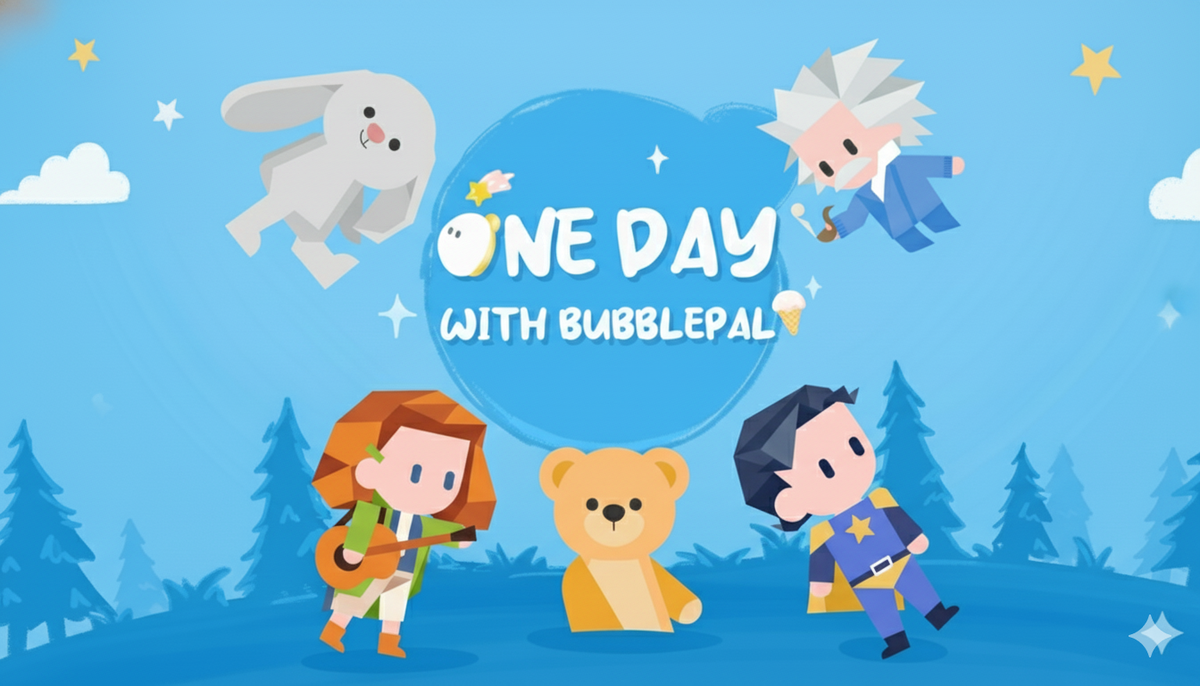In today's fast-paced world, handing a child a tablet is the easiest choice when a parent needs a moment. It's quiet, it's effective, and it's universally loved by kids. But alongside that convenience, a sense of unease often creeps in. We long for "screen-free companionship" for our children, yet often fall into the trap of "screen parenting."
We instinctively feel the gap between passive screen swiping and the vibrant, real-world "dialogue" our children truly need to thrive.
This concern isn't just a feeling; it's a fact echoed by parenting experts and child development researchers worldwide. The consensus is clear: the quality of interaction is far more important than the medium.
The Expert Consensus: Why "Dialogue-Based" Interaction is Non-Negotiable
When it comes to child development, nearly all authoritative research points to one core concept: "Serve and Return."
Popularized by Harvard's Center on the Developing Child, this term describes the bedrock of early brain development. When a child "serves" (with a babble, a gesture, or a question), and a responsive adult "returns the serve" (with eye contact, words, or a hug).
This back-and-forth interaction is, at its core, a meaningful "dialogue." It is this conversation that builds and strengthens the brain's critical neural connections. The problem is, a passive screen cannot participate in this profound "dialogue." It might be interactive, but it cannot provide the contingent, meaningful, and emotionally-attuned responses a child's brain craves.
The American Academy of Pediatrics (AAP) supports this finding. They strongly advise that for children aged 3-8, "screen-free play" should be prioritized as the foundation for high-quality companionship and interaction. The AAP emphasizes that even when digital media is used, "co-viewing" is key—where a parent watches with the child and discusses what they're seeing. Why? Because this re-inserts "dialogue" back into the experience.
The Power of Pretend Play: Rehearsing "Dialogue" and "Companionship"
If "serve and return" is the how of interaction, "pretend play" is the what.
Parenting icon Fred Rogers famously said, "Play is the work of childhood." He understood that in pretend play, children are doing serious learning: they process emotions, learn empathy, and solve problems.
In this play, a child often engages in "dialogue" with their toys—an imaginary partner.
They are rehearsing how to accompany and be accompanied. This is developmentally worlds apart from passively watching a character on a screen.

The Tech Bridge: When Technology Finally Joins the "Dialogue"
Here lies the paradox: parents need a break, but children need constant "dialogue" and "companionship." Can we find a tool that meets the parent's need while also acting as a "screen-free companion" that actively engages the child in "dialogue"?
What if technology itself could be reimagined—not as a passive "digital babysitter," but as an active "playmate"?
Haivivi BubblePal: Built for "Screen-Free Companionship" and "Deep Dialogue"
This is the design core of Haivivi BubblePal: a tech partner built for "screen-free companionship" and "deep dialogue." It’s not designed to replace parents, but to extend high-quality, interactive playtimes during those moments when parents are busy.
It perfectly fills the gaps identified by experts:
1. True Screen-Free Companionship:
BubblePal fully aligns with the AAP's call for screen-free play. No passive videos, no addictive swiping—just a light-up button for conversation. It offers pure, undistracted companionship.
2. Active Dialogue, Not Passive Content:
2. Active Dialogue, Not Passive Content:
At its core, BubblePal is an AIGC conversational toy. It's not a passive story-player; it's a dialogue partner. When a child "serves" ("Why do we dream?"), BubblePal "returns" with encyclopedia knowledge in kid-friendly terms, turning curiosity into a meaningful conversation.
3. Empowering Pretend Play:
3. Empowering Pretend Play:
It doesn't hijack a child's imagination; it joins it. By attaching to a child's existing stuffed animal, it brings that teddy bear to life. A child can co-create a story with their toy—the highest form of interactive dialogue.
4. Emotional Dialogue Screens Can't Offer:
4. Emotional Dialogue Screens Can't Offer:
Most importantly, BubblePal does what a tablet cannot: it offers emotional understanding and comfort. It can listen to a child talk about their day and respond with warmth, fulfilling the "serve and return" loop on an emotional, companion level.

The Takeaway
As parents, we don't have to make an impossible choice between efficiency and what's best for our children's development. Technology isn't the problem; it's how we use it.
As Mr. Rogers taught, technology should serve human connection. BubblePal proves that tech doesn't have to be a barrier. It can be a bridge—one that provides high-quality "screen-free companionship" and "meaningful dialogue," even when you can't be in the room.
References
1. "Serve and Return"
Source: Harvard University's Center on the Developing Child
Link: https://developingchild.harvard.edu/science/key-concepts/serve-and-return/
2. "Screen-Free Play" & "Co-Viewing"
Source: The American Academy of Pediatrics (AAP)
Link: httpsNote://www.aap.org/en/patient-care/media-and-children/ (The AAP's main hub for media and children resources).
3. "Play is the work of childhood"
Source: Partners in Child Development (PCD)
Link (Corrected and Verified): https://mypcd.org/play-is-the-serious-work-of-childhood/

